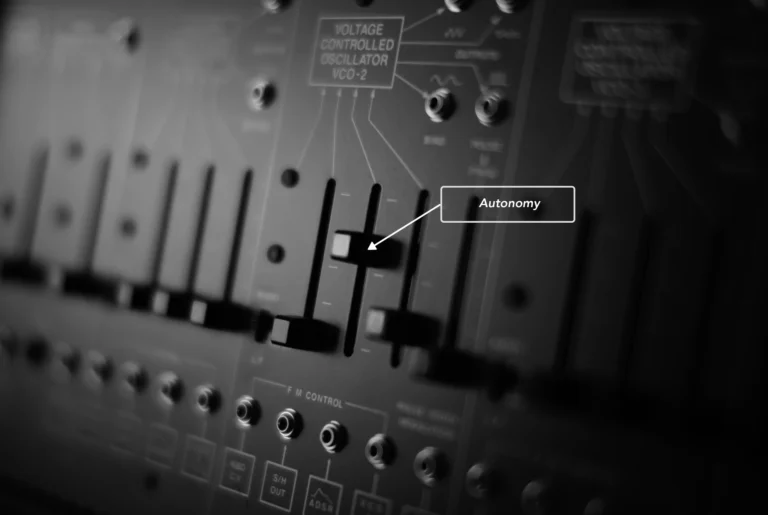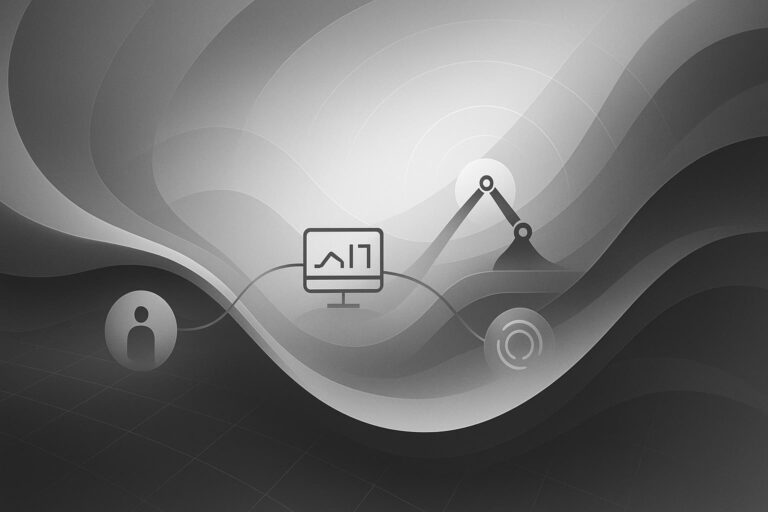When building a robotics company from the ground up, it’s pretty easy to get lost focusing on building the most impressive hardware in the market. With a surge in technical advances and commoditized components, it sometimes feels like everyone’s in a constant race to build the “best robot” and keep one-upping the rest of the market.
Your customers, however, don’t care. You can have the fastest, strongest, smartest robot in the world, but if it’s not doing anything useful, it’s just a fancy toy. While the market may be interested in the technology, the only thing driving their decision-making process is the bottom line. If your robots aren’t saving them time or money, they’re just another shiny, battery-operated distraction at risk of fading into the noise of the market.
This doesn’t mean there’s no hope for robotics-obsessed entrepreneurs. It just takes a little adjustment in how you view the world and how robots fit into that picture.
View robots as an enabling technology
Robots can do stuff. Businesses need to get stuff done. Finding the intersection of these two truths is often the biggest challenge for any tech company, and robots are no exception to the rule.
If you’ve already got a fleet of robots, you’re on the lookout for where they can add value. You’re a solution looking for a problem, which is seldom a winning formula for success. You might find some takers and create a viable application for all that great technology, but you’re just as likely to keep attempting to plug a round hole with a square peg.
Instead, back up and put yourself in your customers’ shoes. No one walks into the CEO’s office asking for a bunch of robots. Instead, they’re trying to address their current problems and/or improve operational efficiency. If they’re asking their CEO for anything, it’s a solution to a particular challenge the business faces, and that solution just might happen to involve robotics.
This can be a humbling realization. You know robots are the future, and maybe you’ve even created some unique intellectual property or trade secrets that make your robots amazing at performing certain tasks. But if that task isn’t a problem for the customer, why add robots into the mix?
As cool as robots may be, businesses exist to make money—if robots can’t help, there’s no incentive to even dip their toes in. Your robots are no different than iPads or bar code scanners or smartwatches… they’re all different tools companies can utilize if and when the needs demand it, but their real value is in transforming processes or freeing up resources for other tasks.
Leverage customer research
Unless your founding team is chock full of industry veterans well-versed in various aspects of those businesses, you’ve probably got to do some homework. This means talking to prospects and conducting site visits without trying to sell them anything, simply listening to their pain points and deep diving with insightful questions that extract more details.
One-on-one sessions, focus groups, surveys, and the like are invaluable data collection tools every robotics business should utilize regularly, particularly during the early stages of product development. All this primary research helps narrow things down to use cases where a robotic solution might actually move the needle and create real value for customers.
This also narrows down which capabilities a robotic solution needs to solve these problems. If those tasks don’t necessitate a robotic arm or all-terrain treads it’s better to know that before you’ve kitted out your fleet with those things.
Your business can also now better size the market opportunity. If there are only a few customers for your offering or it lacks a compelling ROI, it’s better to figure that out before you start ordering components and churning out hardware.
Going to market with a solution versus a robot
When you’re selling a solution rather than a robot, you’re using the customer base’s language and frame of reference versus asking them to translate hardware specs into something they can understand. This completely transforms the interaction and dynamic, turning your business from a faceless vendor of widgets into a compassionate and understanding partner fully invested in their success.
This mindset reset gets further enhanced when selling solutions as a service rather than a hardware deal with some integration consulting. RaaS (robotics-as-a-service) engagement financials only make sense for you when you have satisfied customers realizing value on an ongoing basis. Meanwhile, the customer pays as they go out of their OpEx budget and can connect cost savings or productivity gains to that monthly, quarterly, or annual fee.
Since you’ve both got skin in the game, you’re similarly motivated to maximize the customer’s ROI so they’ll continue and expand the relationship. This also creates an ongoing engagement rather than a single transaction, letting you stay close to the customer experience and gather feedback to further enhance your offering.
Investors prefer solutions, too
Building robots isn’t cheap so there’s an ongoing need for cash to invest in technology development, sourcing, and production. That means taking on outside funders at various stages of your business’s lifecycle.
Given how capital-intensive robotics can be, investors want to see a clear path to profitability. A warehouse full of robots isn’t nearly as attractive as an already-deployed solution solving a significant problem for a sizeable market. So, just as your go-to-market story improves when you’re promoting a viable solution rather than cool technology, it’s also easier to raise more cash and appease current investors when you’ve got a story versus a product.
This connects the dots from big ideas and cool tech to recurring revenue and total addressable markets, which is what those folks with deep pockets care about most. It also confirms you’ve found product-market fit, which is trickier and more elusive than it may seem.
Remote management is a key pillar of any solution
Customers buy solutions because they’re trying to fix a problem, and the last thing they want is to pile even more work on their overtaxed staff. That’s why the most compelling solutions offer a clear value proposition and take a “turnkey” approach, minimizing the customer burden to manage their deployment.
Utilizing cloud-based remote management provides insight into what’s happening at every customer location and each robot in the field. From basic maintenance to reporting to remote operation, you can provide best-in-class support without having to staff up an army of field service reps.
Not only does this real-time view into the field enable RaaS firms to measure and confirm the solution’s performance and ROI, but it also gives customers confidence that you’re on top of things so they don’t have to be.
Technology and innovation are still instrumental in creating even more applications for robots to take on tough tasks and streamline operations. But in the neverending quest for faster, stronger, and more capable hardware, we must continually return to “creating customer value” as our guiding principle. The long-term winners will find a way to marry their robotics expertise with solving meaningful problems for their customers and not just beating the competition to the next technical milestone.
Looking for more info on RaaS? Download our free guide, “What Is Robotics As A Service?”.



